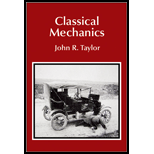
(a)
Using the standard boost along
(a)
Answer to Problem 15.102P
The corresponding boost along the
Explanation of Solution
Write the expression for transformed electric field using standard boost.
Here,
Write the expression for transformed electric field using standard boost.
Here,
Write the expression for transformed electric field using standard boost.
Here,
Write the expression for transformed of magnetic field using standard boost.
Here,
Write the expression for transformed of magnetic field using standard boost.
Here,
Write the expression for transformed of magnetic field using standard boost.
Here,
To compute the corresponding boost along
The corresponding boost along
The corresponding boost along
The corresponding boost along
The corresponding boost along
The corresponding boost along
The corresponding boost along
Conclusion:
Therefore, the corresponding boost along the
(b)
The inverse of transformation obtained in subpart (a), and verify the results for the fields of a moving line charge.
(b)
Answer to Problem 15.102P
The inverse of transformation obtained in subpart (a) are
Explanation of Solution
Write the expression for inverse transformation of
Here,
Use
Rearrange the above equation.
Write the expression for inverse transformation of
Here,
Use
Write the expression for inverse transformation of
Here,
Write the expression for inverse transformation of
Here,
The above equation can be written as
Rearrange the above equation.
Write the expression for inverse transformation of
Here,
The above equation can be written as
Write the expression for inverse transformation of
From equation (15.148),
From the above equation
From the equation (XVI)
From the equation (XVI)
Since
Since
Since
From equation (XVII), write
Since we have considered, the Lorentz boost along the 3 direction as
Use the above condition in equation (XXIII).
Similarly
Where
Similarly
Using equation (XXIV), (XXV), and (XXVI), write the expression for
Since
From the equation, it is evident that equation (15.151) is verified.
Write the expression for
The above equation can be written as
Write the expression for
The above equation can be written as
Write the expression for
Using equation (XXVII), (XXVIII), and (XXIX), write the equation for
In the above equation
Use the above condition in equation (XXX).
Since
From the above equation it is evident that equation (15.152) is verified.
Conclusion:
Therefore, the inverse of transformation obtained in subpart (a) are
Want to see more full solutions like this?
Chapter 15 Solutions
Classical Mechanics
 College PhysicsPhysicsISBN:9781305952300Author:Raymond A. Serway, Chris VuillePublisher:Cengage Learning
College PhysicsPhysicsISBN:9781305952300Author:Raymond A. Serway, Chris VuillePublisher:Cengage Learning University Physics (14th Edition)PhysicsISBN:9780133969290Author:Hugh D. Young, Roger A. FreedmanPublisher:PEARSON
University Physics (14th Edition)PhysicsISBN:9780133969290Author:Hugh D. Young, Roger A. FreedmanPublisher:PEARSON Introduction To Quantum MechanicsPhysicsISBN:9781107189638Author:Griffiths, David J., Schroeter, Darrell F.Publisher:Cambridge University Press
Introduction To Quantum MechanicsPhysicsISBN:9781107189638Author:Griffiths, David J., Schroeter, Darrell F.Publisher:Cambridge University Press Physics for Scientists and EngineersPhysicsISBN:9781337553278Author:Raymond A. Serway, John W. JewettPublisher:Cengage Learning
Physics for Scientists and EngineersPhysicsISBN:9781337553278Author:Raymond A. Serway, John W. JewettPublisher:Cengage Learning Lecture- Tutorials for Introductory AstronomyPhysicsISBN:9780321820464Author:Edward E. Prather, Tim P. Slater, Jeff P. Adams, Gina BrissendenPublisher:Addison-Wesley
Lecture- Tutorials for Introductory AstronomyPhysicsISBN:9780321820464Author:Edward E. Prather, Tim P. Slater, Jeff P. Adams, Gina BrissendenPublisher:Addison-Wesley College Physics: A Strategic Approach (4th Editio...PhysicsISBN:9780134609034Author:Randall D. Knight (Professor Emeritus), Brian Jones, Stuart FieldPublisher:PEARSON
College Physics: A Strategic Approach (4th Editio...PhysicsISBN:9780134609034Author:Randall D. Knight (Professor Emeritus), Brian Jones, Stuart FieldPublisher:PEARSON





